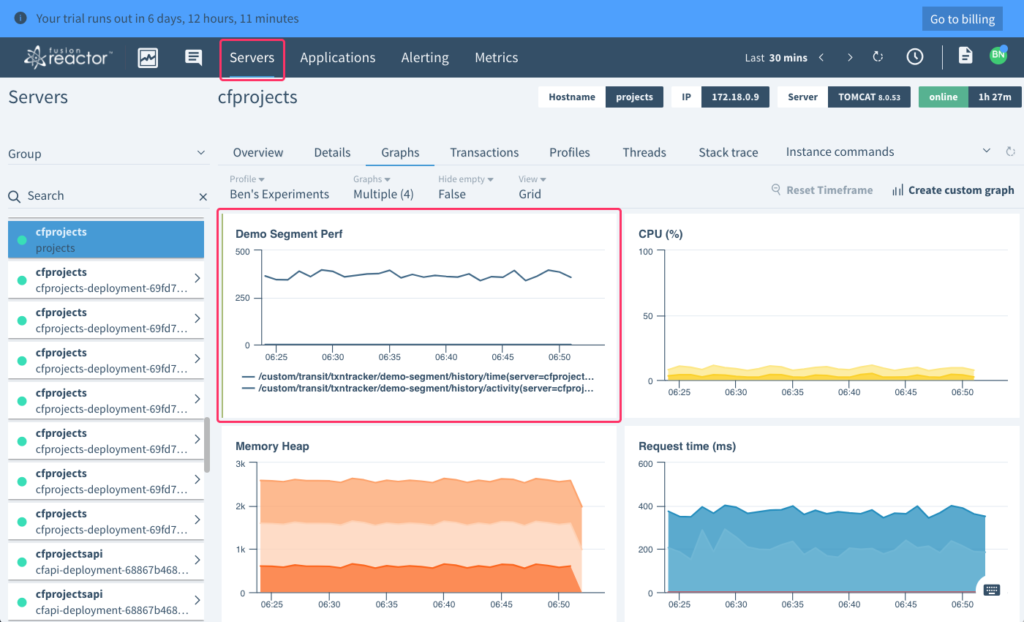How To Monitor A Legacy Java Application
Many progressive organizations with legacy Java applications go through the same phase of not knowing when to deploy application modernization strategies on Legacy apps. If they jump on the bandwagon too fast, they might end up spending too many resources. Moreover, if they delay moving out of legacy apps, it could be a very expensive wreck.
So the big question is, what can businesses that rely on legacy apps do?
Java Growth
Java is turning into a significantly matured programming language. However, can we say that the first legacy Java application has arrived? Perhaps, let’s look at this critically. We will begin to understand that the major problem with Java Apps running on monolithic servers today is the loss of application knowledge, which eventually creates most maintenance issues.
A lot of the newly developed Java apps now share the same “legacy” attributes;
- Many people who know a lot about the application are no longer available. Those who wrote the application have moved on to other assignments within or outside the organization.
- Those staff remaining in the organization do not understand how it works. When they look at the application documentation, they struggle to understand why things operate as they do or why it was written that way.
- Working on some java applications is like staying in a hunted house. Many programmers fear working on these apps. No one wants to work on it because of the several issues it presents.
- The fundamental functions of the business rely on these Java apps. They risk losing a lot if they change them, so there is a possibility that applying changes to one area of the system can create unexpected maintenance issues in other areas.
Moreover, it might be easier to dismiss applications with the attributes above and revamp the business with the new application. The truth is every application has an expected end unless the maintenance culture follows a new circle.
Legacy Java apps can be expensive
IT organizations should think outside the box. They should not consider tagging these applications as cranky legacy applications destined for pull and replacement. Instead, they should redeem the potential inside the application by implementing application modernization strategies.
When we look at how most organizations operate, it leads to the loss of application knowledge. This is the actual problem of why most companies struggle to maintain legacy systems. Two to three years after the source code enters production, much knowledge about it has derailed. This is because the applications are not adequately documented. People move on, forget or even change systems in a rush to churn out new features, resulting in a lot lost along the way.
On the other hand, the availability of experienced staff, accurate documentation, and application knowledge continue to decline, while the maintenance cost of these java apps skyrockets. There is a shortage of workers with legacy skills. It may surprise you to know that people with esoteric mainframe skills, such as VSAM cluster tuning, assembler language, 4GL knowledge, and performance tuning, are now high-demand roles for IT organizations with legacy Java apps.
How to improve the performance of a legacy Java App
Mean Time to Know (MTTK) for legacy Java applications is often days, the implementation of a good APM solution such as FusionReactor can cut MTTK in half. It will enable the developer to save hours hunting for performance and code issues by utilizing a number of capabilities such as deep dive observability, continuous profiling, and automated root cause analysis. Such capabilities will enable the user to instantly find critical code issues, identify bottlenecks and potential memory leaks that are slowing down an application.
Application Performance Monitoring Tools
According to Capers Jones of Software Productivity Research, lost application knowledge can be expensive. In addition, it can also seriously impact a programmer’s productivity.
Again, what can businesses that rely on legacy apps do?
The answer to this critical problem in organizations with many legacy Java apps lies in implementing modernized application strategies through the use of application performance monitoring (APM) tools.
Application monitoring tools take a different approach when managing legacy systems. They tend to redeem lost knowledge by reading every source code within the application and then using a graphical illustration to present the structure and allowing the user to instantly find problems with code, database, or memory.
FusionReactor reduces mean time to know by 50%
APM tools such as FusionReactor Zero in on precisely where your issue is and save hours, provide impact analysis, drill-down capabilities across apps boundaries, and Reduce downtime by finding errors and exceptions by fixing code decay issues. With the FusionReactor’s APM, app knowledge is stored under a standard environment to mitigate the loss of application knowledge.
The APM tool also provides Deep dive observability in an On-prem or hybrid cloud Java monitoring solution. As IT organizations continue to look for a way to cut down on their IT budget and improve annual savings, tools like FusionReactor’s APM tools are worth serious considerations by any firm having several custom-written source code.




